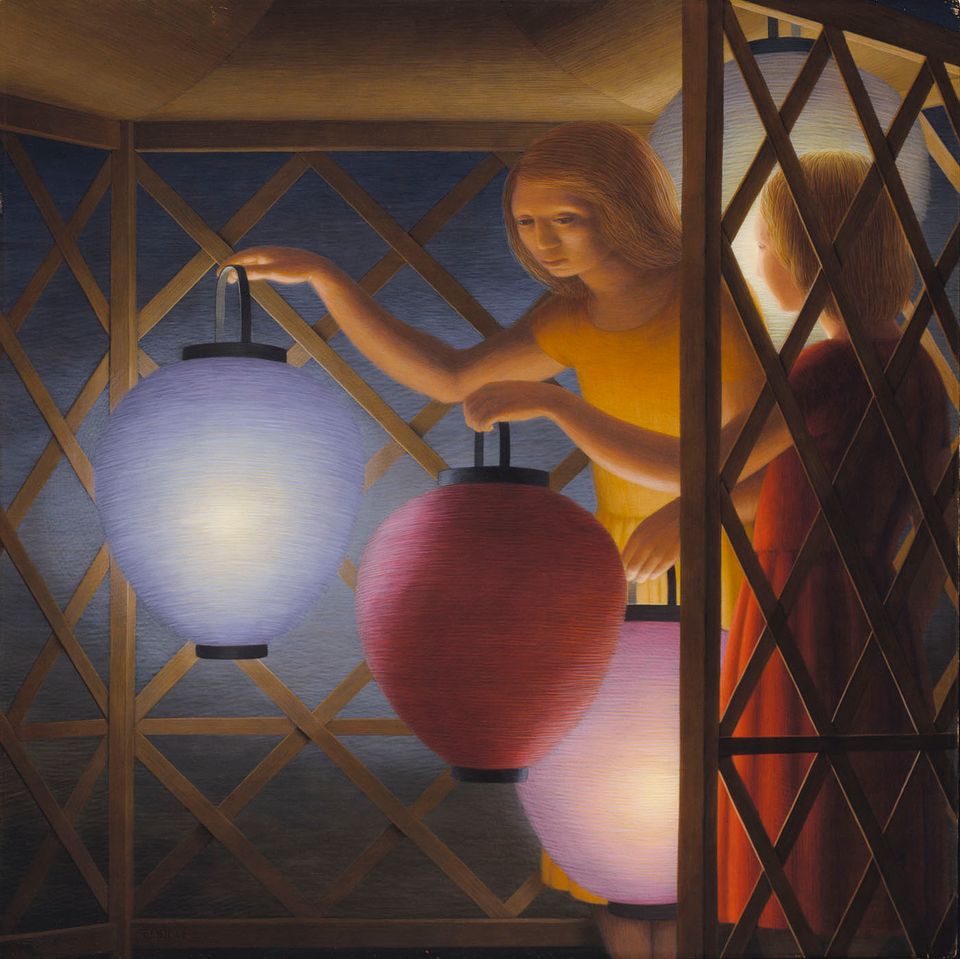Copied
Honoré Sharrer, Tribute to the American Working People, 1951, oil on composition board, overall: 38 3⁄4 x 77 1⁄4 in. (98.5 x 196.2 cm), Smithsonian American Art Museum, Gift of the Sara Roby Foundation, 1986.6.97
Copied
Artwork Details
- Title
- Tribute to the American Working People
- Artist
- Date
- 1951
- Location
- Not on view
- Dimensions
- overall: 38 3⁄4 x 77 1⁄4 in. (98.5 x 196.2 cm)
- Credit Line
- Gift of the Sara Roby Foundation
- Mediums
- Mediums Description
- oil on composition board
- Classifications
- Subjects
- Figure group
- Occupation — industry
- Occupation — farm — harvesting
- Recreation — leisure — conversation
- Architecture Interior — education
- Object Number
- 1986.6.97
Artwork Description
Modern American Realism: The Sara Roby Foundation Collection, 2014
Luce Center Label
Honoré Sharrer's Tribute questions the future of working people in post--World War II America. The five-panel composition recalls medieval altarpieces, which often show an image of a saint surrounded by illustrations of his or her life. Here, the "saint" is a typical working man, who stands in front of a nineteenth-century factory with the faces of his workmates peering through arched windows behind. The framed design repeats this pattern of windows, as if we are looking from one factory building to another. In the 1930s, Americans celebrated working people to boost morale and speed the country's recovery from the Depression. But during World War II, labor activism fell by the wayside, and Sharrer painted this image in 1951 to record what she saw as the workers' "final bow." (Doss, "Sharrer's Tribute to the American Working People," American Art, Fall 2002) The four smaller images---Country Fair, In the Parlor, Farm Scene, and Public School---show different moments in everyday life. In one sense, these episodes capture the spirit of play and the human comfort of community. But Sharrer's workers and children stand and look out at the viewer, as if some cold reality had brought them up short and they are uncertain of what to do next.
Audio
Exhibitions
This exhibition presents some of the most treasured paintings and sculpture from SAAM’s permanent collection, including artworks by Will Barnet, Isabel Bishop, Paul Cadmus, Edward Hopper, Yasuo Kuniyoshi, Jacob Lawrence, George Tooker, among others.















